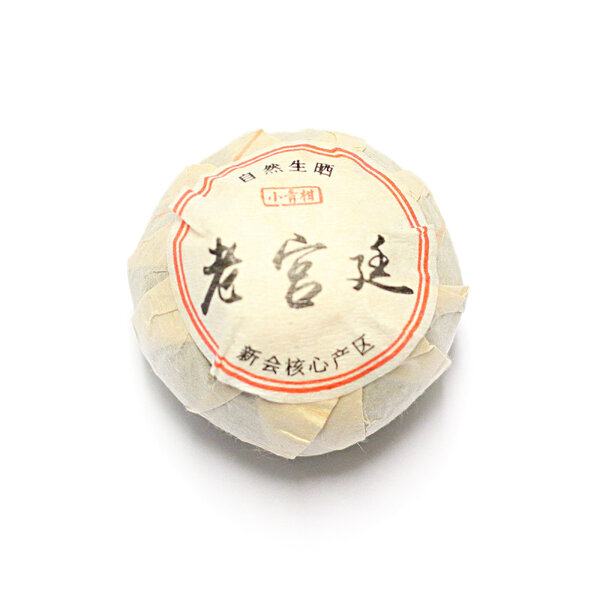Shu Pu Erh Xinhui Xiao Qing Gan
-
Harvest Year 2009
-
Country of Origin China
-
Type of Tea Pu Erh
-
Total Price: from 16.00 € (including VAT)
An interesting pu erh hidden in the peel of a green mandarin, originating from the Xinhui / 新会 area, Guangdong province.
Xiao Qing Gan / 小青柑 - "Little Green Mandarin" is made using unripe fruits and combines a citrus scent with a sweet tea aroma.
Green mandarins have the highest oil content. They have a slightly bitter and sour taste with a pronounced fruity aroma. They are sweet and leave a refreshing aftertaste.
The rich fresh floral-fruity aroma and the delicate aroma of ripe pu erh blend and complement each other beautifully. The infusion is red, smooth, delicate and there is a pleasant sweetness in the aftertaste.
According to traditional Chinese medicine, it has a beneficial effect on the liver and bile ducts and regulates its Qi, promotes digestion and protects the cardiovascular system.
50 g contains cca 4 pieces.
PREPARATION TIP: We recommend placing the tangerine in a strainer and slowly pouring boiling water through the larger hole in the bottom and letting it drain out through the smaller hole through the strainer into the jug.
Tea Preparation for Multiple Infusions
-
Tea Quantity 5 g
-
Water Quantity 200 ml
-
Water Temperature 100 °C
-
Brewing Time 15s, 30s, 45s, 60s, 120s, 300s
-
Number of Infusions 5 - 6
-
Tea Characteristic Stredne povzbudzujúci
Tea Preparation for Single Infusion
-
Tea Quantity 5 g
-
Water Quantity 0,5 l
-
Water Temperature 100 °C
-
Brewing Time 3 - 5
-
Number of Infusions 1 max. 2
-
Tea Characteristic Stredne povzbudzujúci
Pu-erh is a Chinese fermented tea originating from Yunnan Province. It is characterised by its earthy, rich flavour, which deepens and mellows with extended ageing. There are two main types: Sheng (raw, light Pu-erh) and Shu (ripe, dark Pu-erh). Sheng undergoes natural ageing, while Shu is rapidly fermented.
Pu-erh is one of the oldest and, due to its effects, most renowned teas.
It is produced as loose leaf tea or pressed into shapes. The most common pressed Pu-erh shapes are:
- Bing Cha (饼茶) – "Cake" or "Disc" – a flat, round shape, most commonly pressed in weights of 357g, 200g, and 100g. Sometimes also referred to as Ping Cha.
- Tuo Cha (沱茶) – "Nest" – shaped like a bird's nest with a hollow depression on the bottom. Often pressed in weights of 250g, 100g, or smaller 5g nests called mini Tuocha.
- Zhuan Cha (砖茶) – "Brick Tea" – rectangular, brick-shaped. Standard weights include 250g, 500g, or even 1kg bricks.
- Fang Cha (方茶) – "Square Brick" – similar to Zhuan Cha but smaller and often more decorative, sometimes divided into smaller squares like a chocolate bar. Typically around 100g to 250g.
Interesting fact: Pu-erh tea collections are highly valued. Many people own Pu-erh collections worth thousands of dollars. In parts of Asia, aged and rare Pu-erh teas are even considered a good investment for the future and may be included as part of a bride's dowry.
